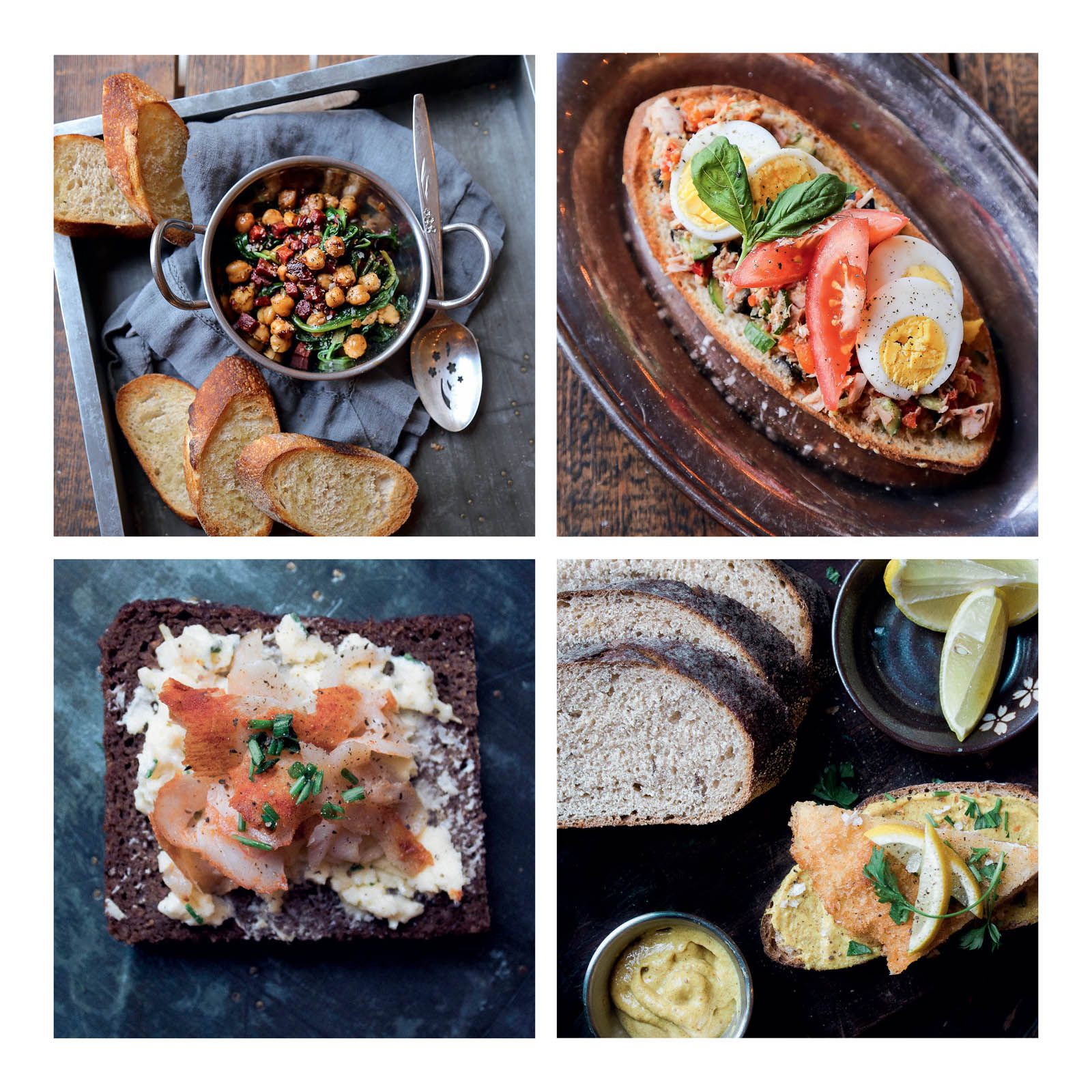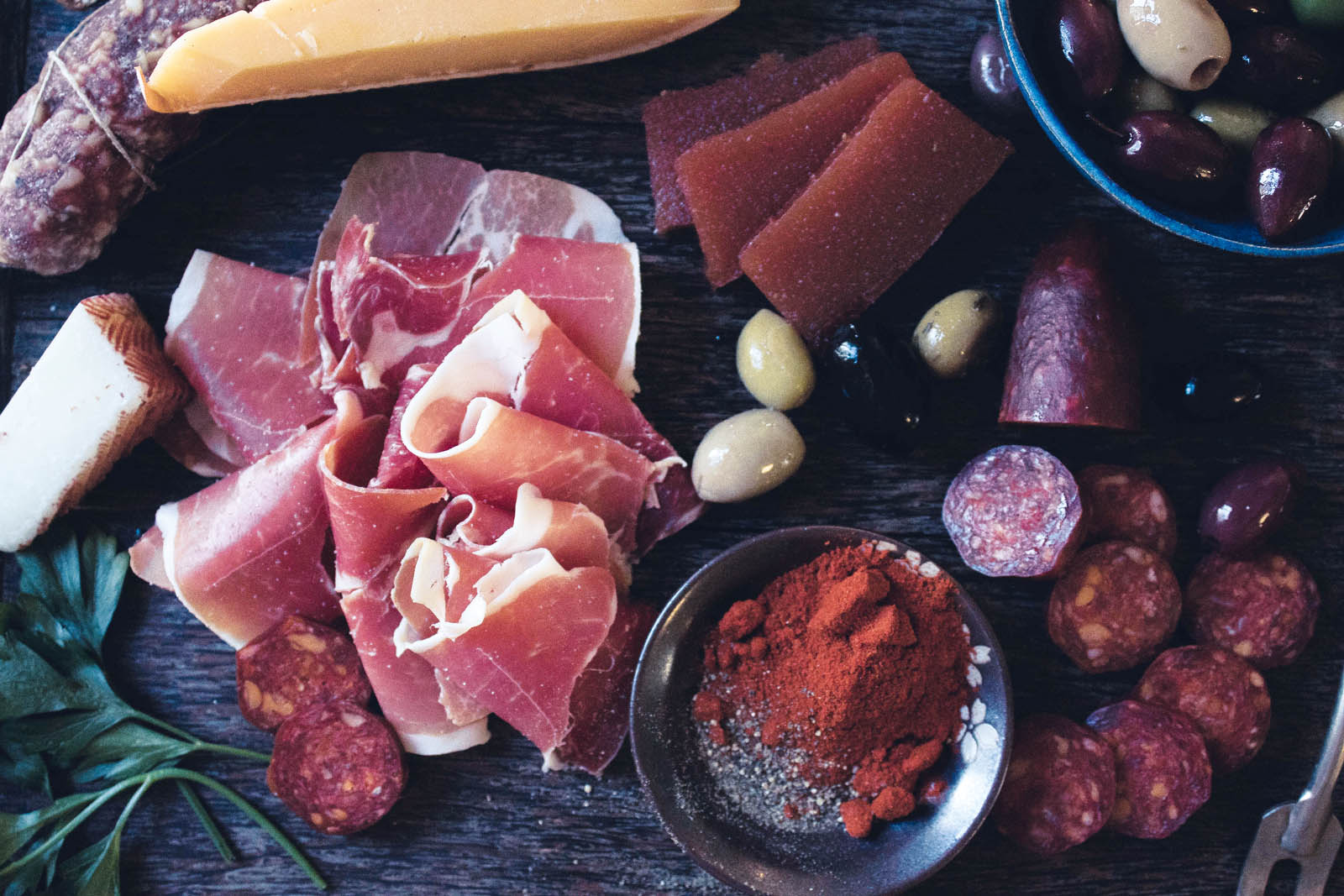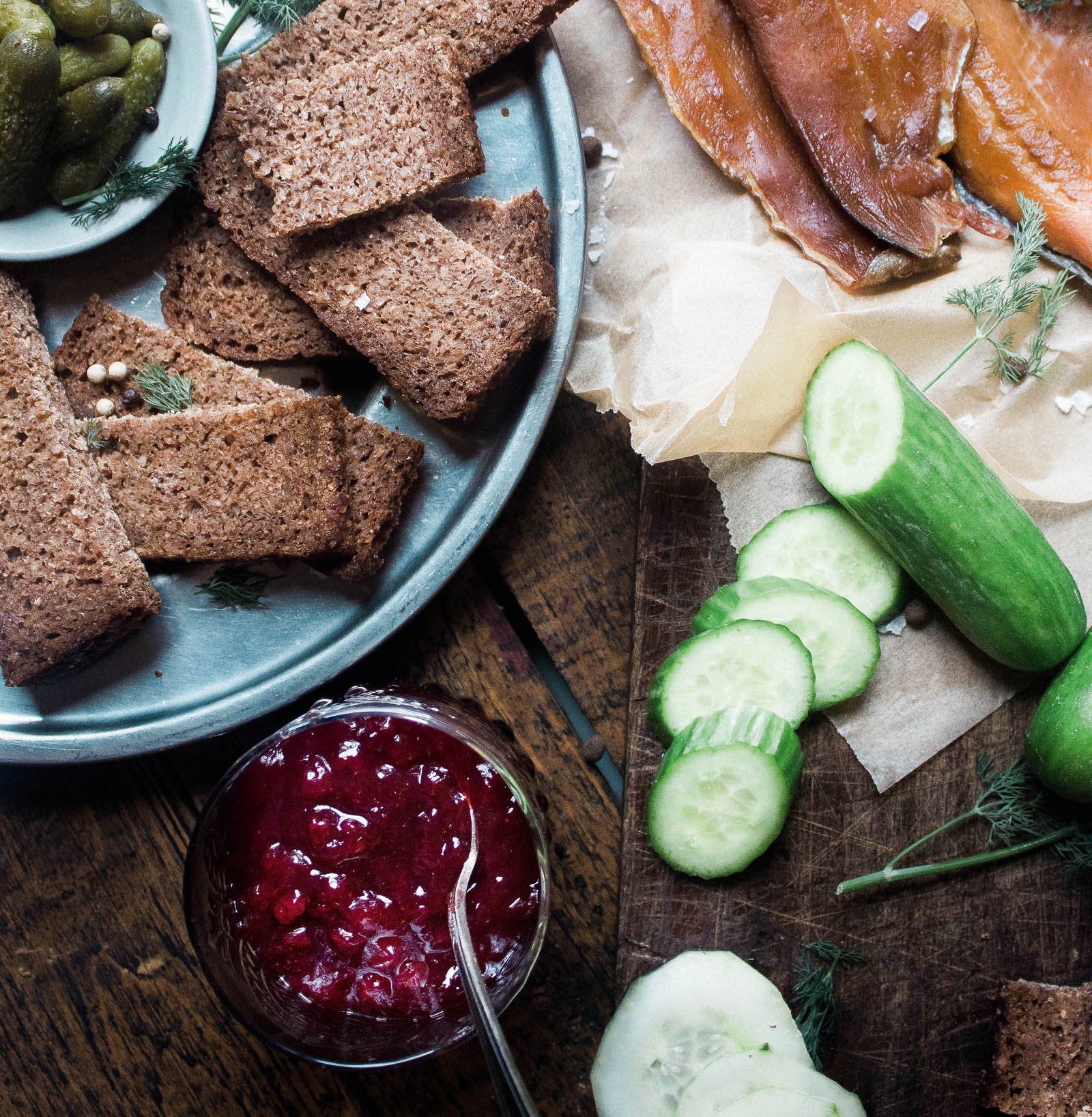I love open-faced sandwiches. They are one of my favorite forms of sustenance—so seductively elemental and essential. While I appreciate Michelin-starred haute cuisine, bistro and trattoria classics, modern gastronomy, food truck fusion, foraged whatever—the list could go on—I absolutely adore a good piece of bread topped with something tasty. The tartines of France, the bruschette and crostini of Italy, the montaditos and pa amb of Spain, the smørrebrød of Denmark, the butterbrote of Germany, the molletes of Mexico, and the toasts of America, Britain, and beyond—these are dishes that have always called to me and will always have places of honor in my culinary memory box and nostalgia file.
Today, open-faced sandwiches in all of their chef-driven, cutting-edge interpretations are the ne plus ultra of casual-chic comfort food. They are having a moment, and that moment is not going to be over any time soon, if ever. But let’s get real: Open-faced sandwiches have long been part of the culinary landscapes of many countries across the globe. They speak plainly yet eloquently of their provenance—painting a picture, telling a story, and giving a history lesson in several delicious bites. They are so fundamental and popular in some countries that they constitute their own culinary category. And it is certainly easy to understand why.
Whether the sandwich is a slab of country bread grilled over an open fire, rubbed with garlic and ripe tomato, drizzled with olive oil, and sprinkled with coarse salt; or a diminutive square of pliable light rye spread with dill and lemon butter and draped with smoked salmon; or a piece of pumpernickel piled high with chopped liver, dotted with sautéed onions and hard-cooked eggs, it is sure to be eaten with gusto and appreciation. That is because very few among us can resist the undeniable pleasure and deep satisfaction that is derived from consuming an open-faced sandwich, no matter how simple or sophisticated it may be. No doubt that accounts for the longstanding adoration of these items in the countries of their origin and for their newfound prevalence in restaurants, cafés, and home kitchens.
The open-faced sandwich has been with us since the late Middle Ages, when a thick slab of coarse bread, called a tranche in French, or a trencher in English, was used as a plate. When the meal was over, the diner would either eat the food-soaked slice if his hunger had not been satiated, or he would give it away. It is not surprising, then, that the trencher was considered the precursor to the open-faced sandwich, not to mention tableware. While the function of the open-faced sandwich has obviously changed since the Middle Ages, the form has not. It is still, at heart, a utilitarian dish—one that uses bread as a vehicle to transport other ingredients from the plate to the mouth, either with or without cutlery.
But whether eaten out of hand or sliced into dainty bits, this user-friendly treat is a godsend because it is a cinch to prepare, requiring a minimum of effort and a modicum of cooking. It can be put together with the most basic of ingredients from the refrigerator, pantry, or garden, and delivers maximum payoff in terms of flavor and enjoyment. It can be dressed up or dressed down, classic or creative, and can be served for breakfast, brunch, lunch, dinner, supper, or a snack. Its versatility is truly amazing, and its lusciousness cannot be denied—not to mention it is the apogee of dinner party appetizers. All that’s needed to start is some good bread.
In this book I will bring the open-faced sandwiches from several countries into the home kitchen. Some of my recipes are traditional, some are reinterpretations of classics, and some are original creations based on the flavors, ingredients, and/or specialties associated with the country at hand. Each recipe reflects the taste and spirit of its place of origin, yet is perfectly translated for the way we cook and eat in America today. This is the food I love, and I hope you will love it as much as I do. As I always say, everything tastes better on bread!

About the Recipes
There are many variables in cooking, so I encourage you to look upon my recipes as flexible rather than rigid entities, and bring your common sense and personal palate into the kitchen. I want you to feel inspired, not straightjacketed.
Lots of things affect the result of a recipe: the size and thickness of a pot, pan, or skillet; the accuracy of the oven temperature; the intensity of the heat of a grill, burner, or cooktop; the way you cut something; and even your own individual taste buds. So when I tell you to cook an onion over medium heat until it is softened, and that it will take about 10 minutes to do so, please keep in mind that your skillet and your stove are probably different from mine, or those of the tester, so the time is approximate. If your onion is softened at 8 minutes, you are done; if your onion needs more than 10 minutes, well, cook it more. If I tell you to season something generously with salt and pepper, and you don’t like a lot of salt and pepper, then season it lightly with salt and pepper. If I tell you to add hot sauce, and you hate hot sauce, don’t add it. At the end of the day, it's up to you. And remember to taste as you go. If I call for the juice of 1 lemon, but you want more, add more!
In addition, since everything in this book is served on bread, and bread slices vary in size, you may end up having more topping than bread or more bread than topping. If that happens, not to worry: just make an extra sandwich or pile more topping on each bread slice. If you want to use a different bread from the one I call for, that’s cool; if you want to use gluten-free bread, that’s dandy, too; and if you don't want to use bread at all, that’s just fine—crackers or just a plate will work well for many of these recipes. If I call for the bread to be toasted but you don’t want it toasted, don’t toast it, and vice versa.
At this point it goes without saying, but I will say it anyway: the better the ingredients that go into a recipe, the better the outcome. So always try to use the best ingredients you can find and afford. But don’t make yourself crazy. Sometimes whatever you have on hand is completely acceptable. I don’t call for too many exotic ingredients in this book, but whenever I do, I offer substitutes, so none of these recipes should be out of reach to anyone. And if you need to cut a recipe in half, or double or triple it, that’s fine too.

Instant Open-Faced Sandwiches
This is a cookbook filled with recipes for open-faced sandwiches. So it may seem counterintuitive and/or a bit masochistic to tell you that you do not need a recipe to make an easy open-faced sandwich with international flair, but that is indeed the truth. I know that you don’t always have time to cook from a recipe; I certainly don’t. Sometimes you just want to slap something together with what you have on hand, and that’s fine. So here are some open-faced sandwich tips for the days when you just don’t have time to make a recipe—even one of my fabulous recipes.
Bread and Cured Meat
A slice of good bread or toast slathered with butter or drizzled with olive oil and topped with salami, prosciutto, speck, jamón, Bayonne ham, saucisson, or whatever cured meat your heart desires is an unbeatable combination. If mustard is your thing, go for it. Serve with some olives and wine, and you have a meal of the gods.
Bread and Cheese (except for mozzarella, burrata, and ricotta)
A slice of good bread or toast is at its simple and sexy best when topped or spread with yummy cheese. Your yummy cheese may not be my yummy cheese, but that’s not the point: the point is that the cheese be of fine quality, no matter what kind it is. Could there be a better meal on the run?
If you are a fan of fruit with your cheese, you can’t go wrong with thin slices of apples, pears, figs, persimmons, or even grapes or cherries arranged over or under the cheese. Dried fruit works well, too, as does the miraculous quince paste.
If you are a fan of cheese and jam, why not try cheese with jam? Trust me, it is fantastic. I love cheddar and marmalade, Brie with cherry jam, Camembert with apricot jam, Gorgonzola with fig jam, and the list goes on. And in a similar sweet vein, there is not a blue cheese alive that does not like honey. Why not experiment with different pairings?
Bread and Cured Meat and Cheese
A slice of good bread or toast is the perfect place to stack cured meat and cheese, if that is your wont. You can complement the combo with butter, mustard, jam, or fruit depending on what you have put together. It’s hard to resist ham and cheddar, or Brie and prosciutto, or salami and Parmesan, or whatever kind of double trouble you love best.
Bread, Meat and/or Cheese . . . and all those condiments you forgot about
A slice of good bread or toast is the perfect place to unload all those pestos, tapenades, savory jams, spreads, and relishes that you’ve been collecting in your cupboard. Eat them on their own or top them with cured meat or cheese—or both—and you will be happy.
Bread with Mozzarella or Burrata
A slice of good bread or toast topped with slices of mozzarella or burrata, drizzled with fantastic extra virgin olive oil and aged balsamic vinegar, and seasoned with salt and pepper is heavenly, but I wouldn't say no to the addition of cured meat, pesto, tapenade, roasted peppers, sun-dried tomatoes, or fresh tomato slices. No sweet jam or honey, though.
Bread with Ricotta Cheese
A slice of good bread or toast mounded with fresh whole-milk ricotta cheese, drizzled with olive oil, and sprinkled with salt and pepper is also celestial. But ricotta is such a good foil for so many things. Go savory with sun-dried tomatoes, roasted peppers, grilled or sautéed vegetables, or shredded fresh vegetables. Or go sweet with fresh or dried fruit, jam, honey, syrup, peanut or almond butter, or Nutella. Go crunchy with nuts, seeds, granola, chocolate chips, or cacao nibs.
Bread and Tomato
A slice of good bread or toast with slices of ripe tomato is an essential combination. Some people insist on slathering the bread with mayonnaise, others drizzling it with olive oil, but everyone can agree on salt. When tomatoes are in season, that is the way to go. You may want to gild the lily with cured meat, cheese, tuna, sardines, or anchovies, but purists may balk.
Bread and Smoked Salmon
A slice of good bread or toast spread with butter or crème fraîche and draped with smoked salmon is hard to top. You can leave it at that, or gussy things up with capers, onions, chopped egg, and/or caviar.
Bread with Just About Anything
I am of the mind that almost everything tastes better on bread. While clearly that is not entirely true, you get my drift. So when you are looking for an instant open-faced sandwich, let your imagination—as well as your pantry and refrigerator—be your guide. Greens such as spinach, arugula and watercress, mesclun, and basil add a fresh bite to almost any sandwich, and romaine lettuce is always good for crunch. And don’t forget, leftovers are terrific!
